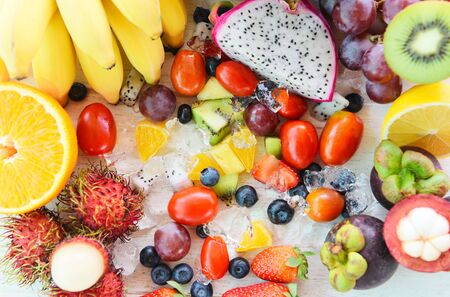Introduction to British Superfoods and Cardiovascular Wellbeing
Heart health remains a pressing concern for many across the UK, with cardiovascular disease consistently ranking among the leading causes of mortality and long-term illness. Despite advances in medical care and public health initiatives, the prevalence of heart-related conditions such as hypertension, stroke, and coronary artery disease continues to place a significant burden on individuals, families, and the NHS. In response to this ongoing challenge, there has been a noticeable shift in public interest towards preventative measures rooted in everyday lifestyle choices—particularly diet. Amidst global conversations about superfoods, Britons are increasingly turning their attention to local produce and traditional ingredients that offer natural support for cardiovascular wellbeing. From humble berries grown in hedgerows to heritage grains and leafy greens, these British superfoods are now being celebrated not just for their culinary value but also for their potential role in promoting heart health. The growing body of research exploring the benefits of these native foods is prompting renewed enthusiasm for incorporating them into daily meals as both a practical and culturally resonant approach to supporting heart health.
2. Home-Grown Superfoods: What Qualifies in the UK
When discussing superfoods, it’s tempting to think of exotic imports like goji berries or acai, but Britain’s own fields and hedgerows offer a remarkable array of nutrient-rich options perfectly suited to local diets and agricultural practices. Understanding what qualifies as a “superfood” in the British context involves more than just nutritional density—it’s about accessibility, sustainability, and how these foods fit into the fabric of British culture and tradition.
Berries: From Hedgerow to Breakfast Table
British-grown berries such as blackcurrants, raspberries, strawberries, and bilberries are not only celebrated for their vibrant flavour but also for their impressive antioxidant content. Blackcurrants, in particular, have been studied for their high vitamin C levels—four times that of oranges—and anthocyanins linked to cardiovascular health. Raspberries and strawberries grown across the UK’s temperate regions are equally rich in fibre and polyphenols, making them a heart-friendly choice for breakfast or desserts.
Oats: A Staple with Staying Power
Few foods are as quintessentially British as porridge oats. Oats thrive in the UK’s cool, moist climate and have been a dietary staple since ancient times. Modern research highlights their high beta-glucan content—a soluble fibre known for lowering cholesterol—which supports heart health when consumed regularly. The slow-release energy from oats also aligns with recommendations for managing blood sugar and maintaining cardiovascular wellness.
Kale: Reviving a British Green
Kale, once a kitchen garden classic, has seen a revival on British plates thanks to its dense nutritional profile. Packed with vitamins K, C, and A, along with calcium and potent plant compounds like lutein, kale is now recognised as a home-grown superfood. Its role in traditional winter stews is being complemented by modern uses in salads and smoothies.
Rapeseed Oil: The Local Alternative to Olive Oil
Cold-pressed rapeseed oil is increasingly regarded as the British answer to Mediterranean olive oil. Grown widely across English and Scottish farms, this golden oil boasts a favourable balance of omega-3 and omega-6 fatty acids, plus vitamin E. Studies suggest its regular use can support healthy cholesterol levels—a key factor in heart health—making it both a sustainable and beneficial choice for everyday cooking.
Comparing Key Nutritional Benefits
| Superfood | Main Nutrients | Cardiovascular Benefits | Cultural Notes |
|---|---|---|---|
| Blackcurrants | Vitamin C, Anthocyanins | Antioxidant support, reduces inflammation | Traditional jams & cordials |
| Oats | Beta-glucans, Fibre | Lowers cholesterol, stabilises blood sugar | Porridge staple since medieval times |
| Kale | Vitamins K/C/A, Lutein, Calcium | Lowers blood pressure, antioxidant protection | Historic garden vegetable; modern revival |
| Rapeseed Oil | Omega-3/6 Fatty Acids, Vitamin E | Supports healthy cholesterol ratios | Sustainable alternative to imported oils |
The British Definition of Superfoods
A true British superfood combines proven nutritional benefit with local heritage and environmental sense. Whether it’s blackcurrants from Kent or Scottish oats, these foods are accessible to most households and support both personal wellbeing and UK agriculture. Embracing home-grown superfoods is not just about following trends but about reconnecting with time-honoured ingredients that fit naturally into the rhythm of British life.

3. Latest Scientific Findings: Superfoods and Heart Health
Recent peer-reviewed studies from leading UK institutions have shed light on the positive relationship between British superfoods and cardiovascular health. According to a 2023 meta-analysis published in the British Journal of Nutrition, regular consumption of native berries—such as blackcurrants, gooseberries, and elderberries—was linked with improved endothelial function and reduced blood pressure in adults at risk for heart disease. The high polyphenol content of these fruits appears to support vascular health by reducing inflammation and oxidative stress. Furthermore, researchers at the University of Reading found that daily intake of oats, a staple British crop, significantly lowered LDL cholesterol levels over a 12-week period, supporting previous recommendations by the NHS regarding wholegrains and heart health.
In addition to fruits and grains, cruciferous vegetables like kale and broccoli, widely grown across the UK, have been investigated for their cardioprotective properties. A 2022 study in Heart journal followed more than 1,500 participants from different regions of England and Scotland, observing that higher weekly intake of these greens was associated with lower arterial stiffness—a key marker for cardiovascular risk. The results suggest that incorporating locally sourced superfoods into daily meals can make a tangible difference to long-term heart health outcomes.
While these findings are promising, scientists caution that superfoods work best as part of an overall balanced diet and healthy lifestyle. Ongoing research continues to explore optimal portion sizes and combinations for maximum benefit, but current evidence strongly supports choosing home-grown produce as a cornerstone for cardiovascular wellbeing in the UK.
4. Cultural Eating Habits and Practical Incorporation
The traditional British diet, known for its hearty breakfasts, Sunday roasts, and afternoon teas, presents both opportunities and challenges when it comes to integrating superfoods for heart health. While many British classics are rich in carbohydrates and saturated fats, there is a growing trend towards healthier eating without abandoning cultural preferences. Evidence suggests that the effectiveness of superfood interventions is significantly influenced by existing eating habits, with gradual and culturally sensitive adjustments yielding the best long-term results.
Influence of British Eating Habits on Superfood Effectiveness
Research highlights that dietary change is more sustainable when it aligns with familiar tastes and routines. For example, oats—one of the UKs staple crops—are already widely consumed as porridge. When enhanced with berries or flaxseeds, this everyday breakfast becomes a powerful superfood combination supporting cardiovascular health. Similarly, incorporating cruciferous vegetables like broccoli into classic dishes such as cottage pie or roast dinners offers a seamless way to increase nutrient intake.
Practical Ways to Incorporate Superfoods
Below is a table summarising evidence-based suggestions for including British superfoods in daily meals while respecting traditional culinary customs:
| Meal | Traditional Dish | Superfood Addition | Heart Health Benefit |
|---|---|---|---|
| Breakfast | Porridge | Add blueberries & flaxseeds | Improved cholesterol & antioxidant intake |
| Lunch | Ploughman’s sandwich | Include watercress & beetroot | Nitrate-rich for blood pressure support |
| Dinner | Cottage pie | Add kale & peas to the filling | Increased fibre & plant-based nutrients |
| Dessert/Tea time | Scones with cream & jam | Switch to wholemeal flour; add strawberries | More fibre, less sugar spike, added polyphenols |
| Snack/Supper | Crispbread with cheese | Topped with sliced apple & walnuts | Healthy fats & plant sterols for heart protection |
Culinary Traditions Meet Nutrition Science
The key is to honour beloved flavours and rituals while making incremental improvements. For example, swapping white bread for wholegrain in sandwiches or using rapeseed oil (a local British alternative) instead of butter in cooking can have a measurable impact on heart health without alienating the palate. These practical strategies foster both adherence and enjoyment, making heart-healthy eating an achievable goal within the context of British culture.
5. Recommendations from National Health Bodies
When it comes to superfoods and heart health, the guidance from leading UK organisations is both pragmatic and evidence-led. The NHS, British Heart Foundation (BHF), and respected nutritionists consistently emphasise a balanced approach rather than reliance on any single “miracle” food.
NHS: Focus on Dietary Patterns
The NHS recommends following the Eatwell Guide, which prioritises a varied diet rich in fruit, vegetables, wholegrains, lean proteins, and healthy fats. While they acknowledge that foods like berries, oats, oily fish (such as mackerel and salmon), and leafy greens are beneficial for cardiovascular health due to their fibre, omega-3, and antioxidant content, the NHS cautions against viewing any one food as a panacea. Instead, they encourage making these nutrient-dense foods part of everyday meals.
British Heart Foundation: Evidence over Hype
The BHF echoes this sentiment by highlighting that no single superfood can prevent or cure heart disease. Their advice encourages Britons to enjoy a colourful variety of fruits and vegetables—including homegrown options like blackcurrants, kale, and beetroot—while keeping an eye on salt, sugar, and saturated fat intake. They also stress the importance of regular physical activity alongside dietary changes for optimal heart health.
Leading Nutritionists: Local Superfoods Matter
UK-based nutritionists often advocate for incorporating traditional British produce into the diet. Foods such as Scottish raspberries, English apples, and Welsh leeks are promoted for their nutritional density and lower environmental impact compared to imported “superfoods.” These experts also recommend swapping processed snacks for nuts or seeds and choosing wholegrain versions of bread or cereals to support long-term cardiovascular wellbeing.
Key Takeaway
The consensus among national health bodies is clear: diversity and balance trump trends. Embracing a mix of local superfoods within a well-rounded diet is the most robust way to protect your heart—no need for fads or expensive imports.
6. Opportunities and Ongoing Challenges
Looking ahead, the future of British superfoods in supporting heart health is promising, yet not without obstacles. On the one hand, increased awareness about the nutritional value of local produce such as blackcurrants, kale, and oats opens up opportunities for public health initiatives and innovation within the food industry. The integration of these superfoods into everyday diets could significantly benefit cardiovascular well-being across the UK population.
However, several challenges persist. Accessibility remains a key concern, particularly for individuals living in areas where fresh produce is less readily available or prohibitively expensive. Socioeconomic inequalities can limit adoption, with some communities facing barriers in both knowledge and affordability. Furthermore, while initial research indicates positive effects of British superfoods on heart health, large-scale studies specifically targeting diverse UK populations are still lacking.
To address these gaps, further investment in research is essential. Tailored interventions that account for regional dietary habits and cultural preferences will be critical to maximise uptake and effectiveness. Moreover, policy support—ranging from subsidies for local growers to educational campaigns—could help bridge the gap between scientific evidence and real-world practice.
In summary, while the integration of British superfoods into heart-healthy diets holds considerable potential, ongoing efforts must focus on ensuring equitable access and generating robust, population-specific evidence. Only through collaborative action among researchers, policymakers, healthcare providers, and communities can the full benefits be realised for heart health across the nation.
